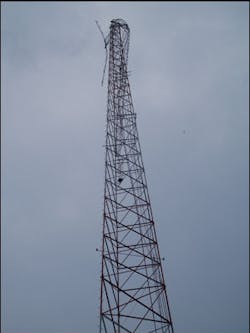Communications Disaster Planning and Recovery: Changing Parameters for Changing Times
Without a doubt, the severe weather season of 2005 was one of the more serious on record. Hurricanes Rita and Wilma followed closely on the heels of their sister Katrina, and the number of significant storms increased to the point that there were insufficient familiar names to call them. New England suffered major flooding that resulted in millions of dollars in damage and the relocation or evacuation of thousands of people. In the Midwest and Southeast, tornadoes - normally associated with the springtime - made deadly fall debuts. In short, wherever you were in the United States, you were often in the neighborhood of a disaster.
Obviously, the fire service played a major role in responding to these disasters. However, the widespread damage and destruction caused by this rash of extraordinarily severe weather placed significant burdens upon the public safety infrastructure. Dozens of fire stations were damaged or destroyed, firefighters and their families displaced, and entire geographic regions devastated. In the wake of these storms, numerous "adopt a department" programs sprang up, in an attempt to help our own, and the International Association of Fire Chiefs (IAFC) began serious discussions about the need for a national mutual aid program.
Throughout this, however, little mention has been made of the role of communications systems and communications personnel in dealing with these issues. Of course, 911 and radio dispatching functions need to be maintained under the worst of conditions. This means robust equipment and sufficient personnel to provide uninterrupted service. However, in the face of these recent challenges, additional attention must be paid to what was once considered to be adequate planning.
As is often the case with transportation emergencies, no singular failure is normally to blame for creating a communications crisis. It often takes multiple concurrent disruptions for a problem to occur. The storms of 2005, however, provided all the necessary ingredients to test even the most robust networks and facilities. Numerous radio towers were damaged by high winds, and commercial power was lost for days. Other utilities such as sewer and water were compromised, and dispatch centers and transmitter sites were flooded. Downed trees and collapsed roadways severed redundant telephone circuits and isolated entire communities from the outside world - and from 911 service.
Communications personnel were stressed to the breaking point. While some of this stress came from dealing with callers who were literally in life-or-death situations, much more of it came from the extended duration of these storms. Even during incidents such as a major airline disaster, the bulk of activities are complete within the first hour or two. In the case of Katrina, many telecommunicators had no relief for days. Even when relieved, they often had no homes to go to or loved ones to offer support, due to storm damage and emergency evacuations.
This was put into perspective by Woody Glover, director of the St. Tammany Parish Communications District, in Covington, LA. "Our biggest hurt was personnel," Glover said. "We hit bottom on the Friday after the storm. Everybody's home was messed up and we had to start sending residents out of state. Personnel felt detached from their families. Even if they could get away, they couldn't see loved ones. People were torn between abandoning their jobs, and in their minds, abandoning their families."
This isolation of communications and communications personnel was not limited to one jurisdiction, however. Willis Carter, first vice president of APCO (Association of Public-safety Communications Officials) International and chief in charge of communications for the Shreveport Fire Department, heard and saw similar stories and situations throughout the Gulf Coast.
"Many communications centers in Louisiana were unable to receive approval through EMAC (Emergency Management Assistance Compact) for relief personnel although teams were ready and standing by to help," Carter said. "I?m not sure where the problem was. In some cases, I get the sense that police and fire departments simply "forgot" about their communications centers. In some cases, the communications center managers may not have been aware of the appropriate steps by which to request aid, and it was brought to my attention just this week that "communications centers" may not even be included on EMAC request forms."
To this end, there are several actions that can be taken to ensure the survivability and recovery of emergency communications, and to place into practice lessons learned from the experiences of those who suffered through unparalleled circumstances. Among these are:
- Establish a mutual aid plan with other agencies for needed resources, but especially for telecommunicators. Fire departments have a predictable access to resources as an incident escalates. Whether this is an additional internal alarm or outside mutual aid, as an event grows in magnitude, resources keep pace. Unfortunately, few dispatch centers have such a structured response to augment staff as the demand for services increases.
In summation, the experiences of 2005 have underscored the need to plan for incidents of extended duration and exceptional magnitude, and to revisit our assumptions regarding staffing, levels of backup, and availability of supplies. Every communications center should plan for emergency operations that last for weeks instead of just hours or days, and fire departments must include communications and dispatch in their planning process. Without this cooperative planning on a local, state, regional and even national basis we will be unable to adequately address even more serious situations that certainly lie ahead.
Barry Furey, a Firehouse contributing editor, is former executive director of the Knox County, TN, Emergency Communications District. He is an ex-chief of the Valley Cottage, NY, Fire Department, ex-deputy chief of the Harvest, AL, Volunteer Fire Department and a former training officer for the Savoy, IL, Fire Department. Furey is past president of the Tennessee chapter of the Association of Public safety Communications Officials (APCO) and former chair of the APCO Homeland Security Task Force. He received the 2005 Tennessee APCO 911 Director of the Year Award.
